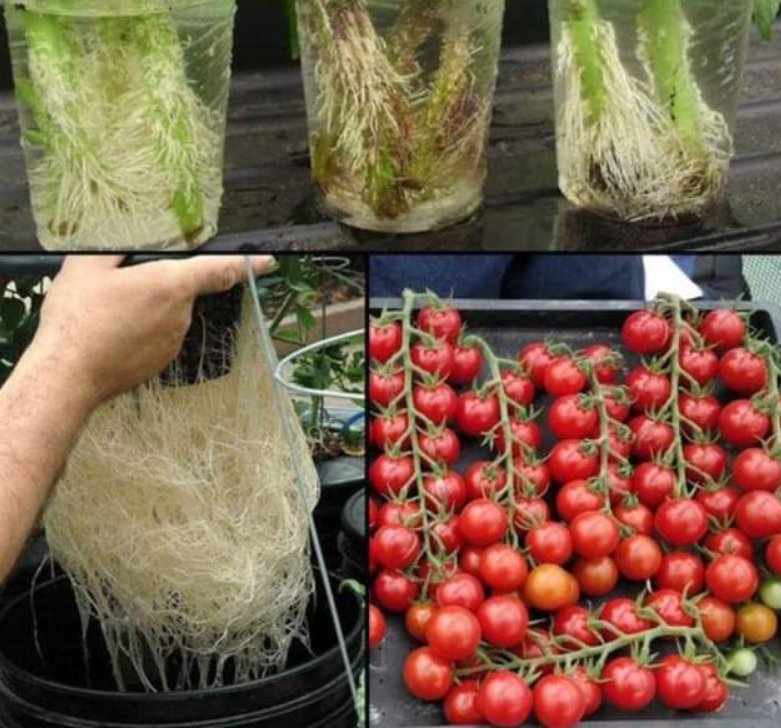ADVERTISEMENT
How to Grow Tomatoes Without Soil: A Comprehensive Guide
Imagine enjoying fresh, juicy tomatoes right from your garden without needing soil! Growing tomatoes without soil is not only possible but has become increasingly popular through a method known as hydroponics. Hydroponic gardening allows you to grow plants using water and a nutrient solution, skipping the need for traditional soil. This method is perfect for those with limited space or those looking to grow tomatoes indoors or in places where soil conditions aren’t ideal.
In this comprehensive guide, we’ll walk you through how to grow tomatoes hydroponically, the benefits of soil-free gardening, and how to get started. Whether you’re a seasoned gardener or a beginner, you’ll be amazed at how easy and rewarding it can be to grow tomatoes without soil.
What is Hydroponic Gardening?
Hydroponic gardening is a method of growing plants without soil, using a nutrient-rich water solution. In this system, plants take up nutrients and water directly through their roots, which are suspended in or covered by the solution. This method can be used to grow a variety of crops, including tomatoes, herbs, lettuce, and peppers.
There are several types of hydroponic systems you can use to grow tomatoes, such as deep water culture, aeroponics, and wick systems. The key to success is ensuring that your plants have access to water, nutrients, and light while minimizing the risk of disease and pests.
Why Grow Tomatoes Hydroponically?
Before we dive into the how-to steps, let’s talk about the benefits of growing tomatoes without soil.
- Faster Growth and Higher Yields: Hydroponic systems often result in faster plant growth due to the direct access to nutrients and water. This can lead to larger yields in a shorter amount of time.
- Water Conservation: Growing tomatoes hydroponically uses significantly less water than traditional soil gardening. The water in the system is recirculated, meaning you don’t need to water your plants as frequently.
- Space-Saving: Hydroponic gardening can be done in small spaces, making it ideal for apartments, urban settings, or locations with poor soil quality.
- Fewer Pests and Diseases: Without soil, many pests and diseases that typically affect garden plants (like root rot) are less of a concern. Hydroponic systems are also easier to manage in terms of nutrient levels, which can help plants stay healthy.
- Better Control Over Growing Conditions: With hydroponics, you can control every aspect of the growing environment, such as temperature, light, and nutrients, leading to a more predictable and controlled growing process.
Step-by-Step Guide to Growing Tomatoes Without Soil
1. Choose Your Hydroponic System
The first step to growing tomatoes hydroponically is to choose the right system for your space and needs. Here are a few popular options:
- Deep Water Culture (DWC): The tomato plants are suspended in a container of water with their roots submerged in a nutrient solution. This system is easy to set up and maintain and is ideal for beginners.
- Nutrient Film Technique (NFT): In this system, a thin film of nutrient-rich water flows over the roots of the plants. It requires more maintenance but is efficient and allows for faster growth.
- Wick System: This simple system uses a wick to draw nutrient solution from a reservoir to the roots. It’s less common for tomatoes but can work well in smaller, low-tech setups.
- Aeroponics: This system suspends the plant roots in the air and sprays them with a fine mist of water and nutrients. Aeroponics is often used for faster-growing crops but can be more expensive and complex.
2. Set Up Your Hydroponic System
Once you’ve selected a system, it’s time to set it up. Here’s how to get started with a Deep Water Culture (DWC) system, one of the simplest and most popular methods for growing tomatoes hydroponically:
- Container: Choose a container to hold your nutrient solution. A large plastic tub or basin works well.
- Net Pots: You will need net pots to hold your tomato seedlings. These pots allow the roots to dangle in the nutrient solution.
- Air Pump: An air pump with an air stone is crucial in DWC systems to oxygenate the water and ensure the roots receive enough oxygen.
- Growing Medium: While this is technically a “soil-free” method, you’ll still need a growing medium to support the plants. Perlite, vermiculite, or clay pellets are commonly used.
- Nutrient Solution: Hydroponic plants need a specific mix of nutrients, including nitrogen, potassium, phosphorus, calcium, and magnesium. Purchase a balanced hydroponic nutrient solution from a gardening store or online.
- Light: If you’re growing tomatoes indoors, you’ll need to provide ample light. LED or fluorescent grow lights will work well for this. Tomatoes require about 12-16 hours of light per day to thrive.
